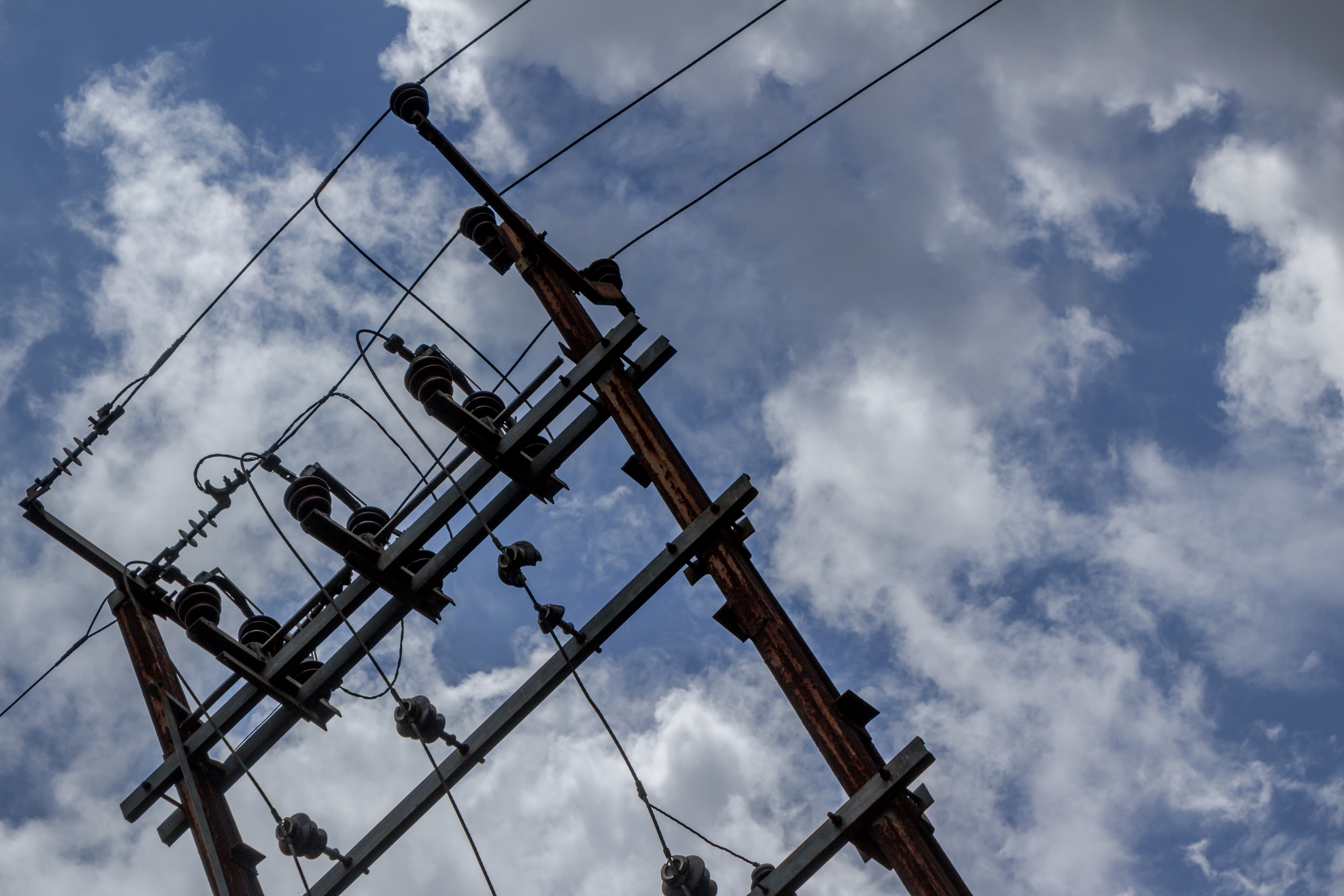CBDCs come in two forms: retail and wholesale. What's the difference?

China, with its e-CNY, has piloted a large number of retail payments.
Image: REUTERS/Tingshu Wang
Cameron Nili
Project Fellow, Financial Market Infrastructure Modernization & Wholesale CBDC, AccentureStay up to date:
Financial and Monetary Systems
- Central bank digital currencies (CBDCs) come in two main forms: retail and wholesale.
- A retail CBDC is used by the general public, while a wholesale CBDC is used for transactions between banks and other financial institutions.
- A new report highlights the transformative potential of wholesale CBDC in modernizing financial markets: Modernizing Financial Markets with Wholesale Central Bank Digital Currency (wCBDC).
The 21st century has been spoken of as the most rapidly changing period in history. As the world changes, we change with it, and we expect the companies we buy from and public services we use to keep pace.
Continuously evolving ways to engage with customers has therefore been the only option for keeping consumers happy. Online banking, credit card autopay and peer-to-peer payment systems are just three examples of this, and the same impetus of keeping up with consumers is why central banks across the world are now looking at central bank digital currencies (CBDCs).
CBDCs are still in their early days, and many central banks are learning about the potential advantages and risks before deciding whether to go ahead with pilot projects. Part of their thinking involves looking at the difference between wholesale CBDCs and retail CBDCs, and deciding whether to adopt one of them, both of them, or neither.
What’s the difference between wholesale and retail CBDCs?
A retail CBDC is a form of central bank digital currency that is used by the general public.
A wholesale CBDC, on the other hand, is used among banks and other licensed financial institutions for interbank payments and securities transactions.

Each jurisdiction could have a CBDC issued by its respective central bank. Both retail and wholesale CBDCs could be used domestically or cross-border, the World Economic Forum’s Central Bank Digital Currency Global Interoperability Principles white paper points out.
Why use retail CBDCs?
Retail CBDCs are being explored most prominently. They are already in use in 11 countries, including the Bahamas, Jamaica, Nigeria and the Eastern Caribbean Currency Union.
The first retail CBDC came into use in the Bahamas in 2019. The Sand Dollar is pegged to the US dollar and is intended to improve financial access for the Bahamian population – 18% of which is unbanked – as well as the resilience of the country’s payment system.

“Most central banks in Latin America and the Caribbean are prioritizing retail CBDC research and development, and have a few key motivations for a possible future issuance of a CBDC,” according to the Forum’s Central Bank Digital Currency Global Interoperability Principles white paper.
Like in the Bahamas, boosting financial inclusion is a key reason these countries are considering CBDCs. Other leading factors include improving the efficiency and safety of payments – aspects that are covered in more detail in our explainer article What are central bank digital currencies and what could they mean for the average person?

In Asia-Pacific, rising demand for digital payments is the main impetus behind the exploration of retail CBDCs. The region has a thriving e-commerce market and strong use of mobile payments.
China, with its e-CNY, has piloted a large number of retail payments. Notably, the e-CNY was marketed to foreigners for the first time during the Winter Olympics in February 2022, when it was used in transactions worth approximately $315,000 a day.
The Bank of Thailand is also testing a retail CBDC. It is doing so because it sees a need to keep pace with digitization trends that are dramatically changing financial infrastructure.
Elsewhere, the European Central Bank (ECB), Bank of England and Bank of Japan are working on prototypes and running consultations on potential privacy and financial stability issues, according to think tank the Atlantic Council’s CBDC Tracker, although progress on developing a retail CBDC in the US is currently in the research phase.
Why use wholesale CBDCs?
Wholesale CBDCs represent less of a shift from the current way of doing things compared with retail CBDCs, according to the Bank for International Settlements (BIS). That’s because domestic wholesale CBDCs operate much in the same way as the reserve accounts that commercial banks often hold with central banks today, according to the Forum’s Central Bank Digital Currency Global Interoperability Principles white paper.
However, wholesale CBDCs could unlock new opportunities in streamlining cross-border payments, foreign exchange and cross-country securities transactions in the cross-border context. In 2021, the BIS Innovation Hub, Banque de France, Swiss National Bank and Accenture demonstrated the feasibility of achieving foreign currency clearing using wholesale CBDC as part of Project Jura.
Several countries have advanced experimentation in the area of wholesale CBDCs. Some of the first experiments were carried out by the Bank of Canada and Project Jasper. The South African Reserve Bank has also focused its efforts on wholesale pilots rather than retail. In Europe, there has been successful experimentation at Swiss National Bank, which issued bonds that were settled with a wholesale CBDC. And central banks looking at adopting the technology to use wholesale CBDCs include the Reserve Bank of Australia, which ran a proof of concept in 2021 and a pilot scheme this year.
BIS is bringing together central banks from China, Hong Kong, the United Arab Emirates and Thailand to test out an interoperable Multiple Central Bank Digital Currency (m-CBDC). It has run a successful pilot that it says suggests new technologies could deliver “faster, cheaper and safer cross-border payments and settlements”.
The ECB is exploring the use of distributed ledger technology, and the New York Federal Reserve has completed a 12-week trial with a wholesale CBDC prototype. “Wholesale cross-border digital currency transactions supported by blockchain technology can deliver fast and safe payments,” it said following the test.
What is the Forum doing to improve the global banking system?
Creating CBDC interoperability
Deciding whether to go ahead with retail or wholesale CBDCs is just the first part of the process. Ensuring interoperability with other CBDCs and other payment systems – both domestically and cross-border – is essential to making them convenient for consumers and to help embed international standards.

Ultimately, this kind of interoperability is what’s needed to make retail CBDCs a success for consumers and wholesale CBDCs a success for banks. As with online banking, credit card autopay, peer-to-peer payment systems and all the other evolutions of the 21st century, people will only want to use CBDCs if they prove to be useful, reliable and make their lives easier.
Don't miss any update on this topic
Create a free account and access your personalized content collection with our latest publications and analyses.
License and Republishing
World Economic Forum articles may be republished in accordance with the Creative Commons Attribution-NonCommercial-NoDerivatives 4.0 International Public License, and in accordance with our Terms of Use.
The views expressed in this article are those of the author alone and not the World Economic Forum.
Related topics:
Forum Stories newsletter
Bringing you weekly curated insights and analysis on the global issues that matter.
More on Financial and Monetary SystemsSee all
Eneida Licaj and Sarah Moin
September 23, 2025
Wolfgang Fengler and Marta Cyhan Bowles
September 22, 2025
Agshin Amirov and Azar Hazizade
September 19, 2025
Naoko Tochibayashi
September 17, 2025
Dante Disparte
September 17, 2025
Kahlil (KB) Byrd and Alexis Crow
September 16, 2025





